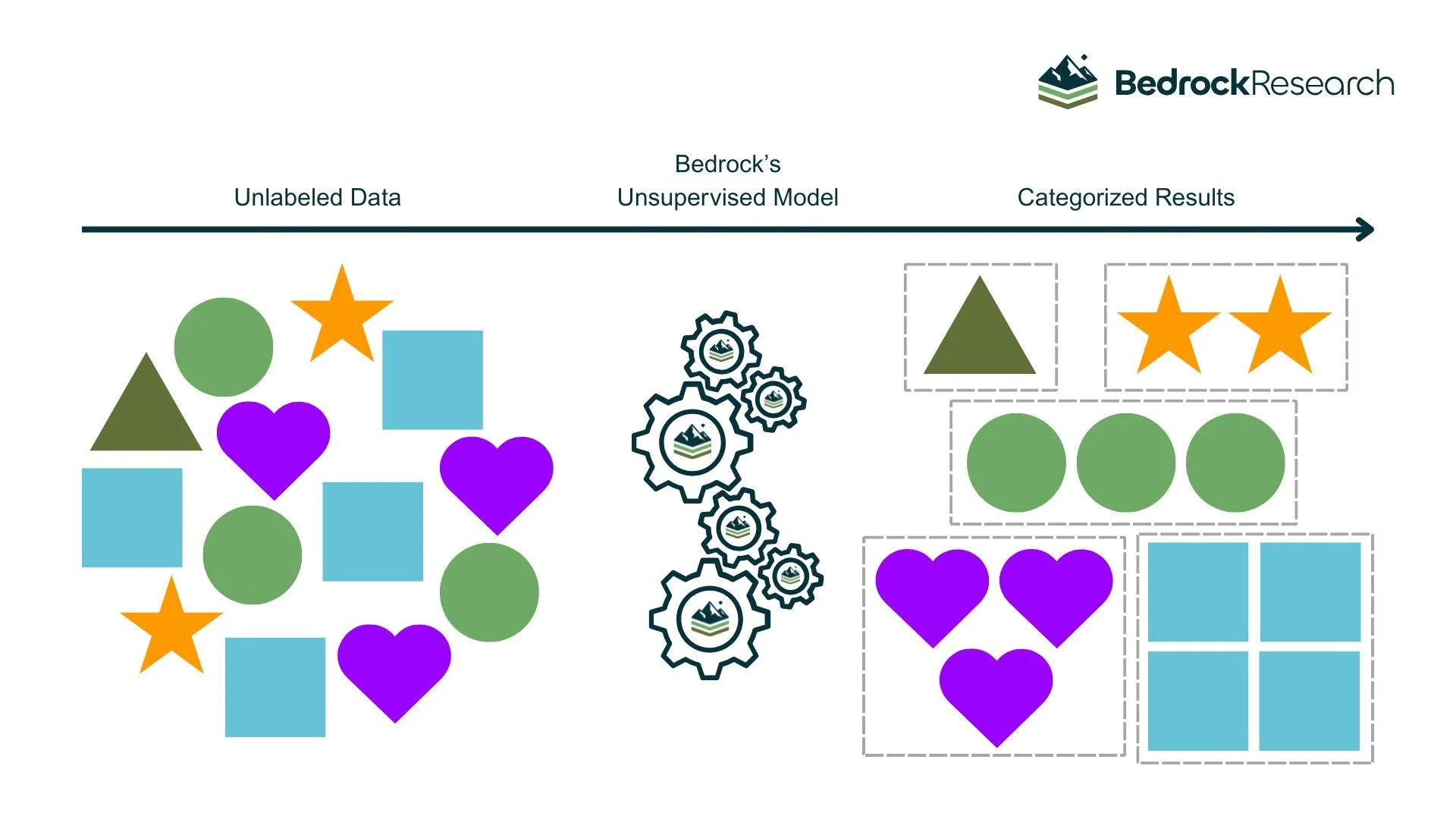Learning Without Labels: The Unsupervised Advantage
The world of machine learning has long been dominated by one paradigm: collect thousands of carefully annotated pieces of data, train a model to map inputs to labels, and then hope it generalizes to production data. This approach, called supervised learning, has delivered proven results over the years. For remote sensing applications such as detecting buildings, ships, or airplanes, assessing infrastructure damage, and performing land-use assessments, this method has yielded many effective models. However, it also has some serious drawbacks.
In order to train high-performance systems this way, you need tens of thousands of manually labeled examples, collected for your specific use case. If you want to build a robust ship detector, you’ll need to label thousands of images of cargo vessels, cruise ships, tugboats, and more. If you want your detector to work on military vessels, you’ll need labeled examples of each of those too. Want to make a model that works on SAR data to complement your RGB ship detector? Now you’re starting from scratch, collecting and painstakingly annotating 10,000 more SAR samples to train that detector as well.
At Bedrock, we’ve taken a different path, one inspired by how humans actually learn. When a child learns about the world, they don’t need someone to physically label every object they encounter. They learn to see patterns, make connections, and build understanding through experience. This is the backbone of unsupervised learning, an approach that’s fundamentally changed how we build and deploy AI for remote sensing applications.
The Supervised Learning Bottleneck
In supervised learning, we're teaching a model to map inputs (remote sensing data) to outputs (labels like "tugboat"). Every single training example must be manually annotated by a human expert. The fundamental constraint is simple: model performance is bounded by the quality, quantity, and diversity of the labeled training set.
This creates three serious problems for training our models, each especially difficult to solve for remote sensing and defense applications:
Data scarcity and cost
High quality labels require domain expertise and are expensive to produce. For complex tasks such as semantic segmentation of satellite imagery, classification of radar signatures, or identification of rare equipment, the cost to annotate your data can grow very quickly. At scale, this can easily eclipse the cost associated with actually training and deploying your ML model.
Distribution shift and poor generalization
Supervised models learn statistical patterns specific to their training data. When deployment conditions differ (different sensor characteristics, new geographic regions, novel camouflage, different atmospheric conditions) performance degrades unpredictably. The model hasn't learned robust, transferable features; it's learned shortcuts specific to its training dataset.
The rare object problem
In the real world, the most operationally significant occurrences are often the rarest. A new adversary platform, an emerging threat, a transient target: these are the cases where labeled training data is scarce or nonexistent. Supervised learning, by definition, cannot handle scenarios where no labeled examples exist.
The Unsupervised Alternative
Unsupervised learning addresses these weaknesses. Instead of relying on human-labeled data, these algorithms discover patterns and structure within unlabeled data. Modern approaches like Self-Supervised Learning (SSL) take this further by using the inherent structure of data itself to create training signals.
Bedrock leverages SSL techniques to build foundation models that learn rich, generalized features from massive amounts of unlabeled remote sensing imagery (for a deep dive into how our foundation models work, check out our previous blog post).
By training this way, we create models that understand the fundamental nature of remote sensing imagery before ever seeing a single human label. This learned understanding then transfers to specific tasks such as object detection, change detection, and damage assessment with dramatically less labeled data than traditional approaches require.
Beyond single-modality learning, we also use techniques like contrastive learning to align data from different sensor types (optical, SAR, infrared) into one unified representation space. This allows our models to reason across sensor types and leverage whatever sources are available in deployed environments.
Why It Matters Now
Satellite constellations generate massive amounts of imagery every single day. Capacity continues to grow, and shows no sign of slowing. The truth is, we already generate more imagery than we have manual labeling capacity today. With unsupervised learning this unlabeled data becomes an asset, not a liability. More data means richer representations and better performance.
On top of that, unsupervised learning allows us to update our models in near real-time. The world is constantly evolving, and the contents of remote sensing data evolves with it. With no need to label this data, we can train on new samples immediately and automatically. In contrast, with hand-annotated data, there is a natural lag between when data collection happens and when you can use said data to further train your model. Not to mention, the whole point of deploying the model is to avoid having to manually label in the first place!
Conclusion
By learning from structure inherent in unlabeled data, we can train on terabytes of data without annotation, generalize across sensors and geographies, adapt to new requirements in days, recognize novel targets with fewer examples, all while reducing costs.
For defense and intelligence, where the most important targets are often the rarest and adversaries continuously adapt, this isn't just valuable. It's essential.
The future of remote sensing AI will be built not on bigger labeled datasets, but on smarter ways to learn from the data we already have.

